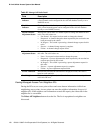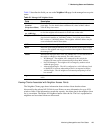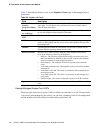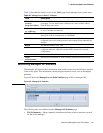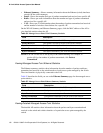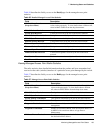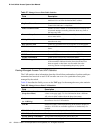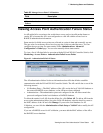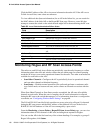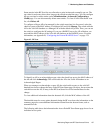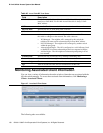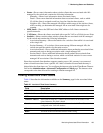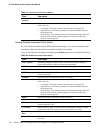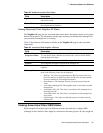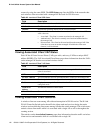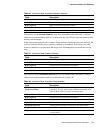
136 © 2001- 2006 D-Link Corporation/D-Link Systems, Inc. All Rights Reserved.
D-Link Unified Access System User Manual
Click the MAC address of the AP to view more information about the AP. If the AP is not a
D-Link Access Point, some values are unknown.
To view additional data (beacon information) for an AP in the failure list, you can search for
the MAC address of the failed AP on the Rogue/RF Scan page. However, some APs that
attempt to contact the switch on the wired network might not be detected during the RF scan.
Monitoring Rogue and RF Scan Access Points
The radios on each D-Link Access Point can periodically scan the radio frequency to collect
information about other APs and wireless clients that are within range. In normal operating
mode the AP always scans on the operational channel for the radio. Two other scan modes are
available for each radio on the APs:
• Scan Other Channels—Configures the AP to periodically leave its operational channel
and scan other channels within that frequency.
• Scan Sentry—Disables normal operation of the radio and performs a continuous radio
scan. In this mode, no beacons are sent, and no clients are allowed to associate with the
AP.
When Scan Other Channels or Scan Sentry modes are enabled, the AP scans all available
channels on each radio. When the scan is complete, the AP sends information it collected
during the RF scan to the switch that manages it. For information about how to configure the
scan mode, see “Configuring Wireless Radio Settings” on page 80.
The D-Link WLAN Controller Switch considers an access point to be a Rogue if is detected
during the RF scan process and the MAC address of the detected AP is not in the local or
RADIUS Valid AP database or if the AP is not managed by a peer switch.
From the Monitoring > Access Points > Rogue/RF Scan Access Points page, you can view
information about all APs detected via RF scan, including those reported as Rogues.
You can sort the APs in the list based any of the column headings. For example, to group all
Rogue APs together, click Status.
Table 39. Access Point Authentication Failure Status
Field Description
MAC Address The Ethernet address of the AP.
IP Address The network IP address of the AP.
Last Failure Type Indicates the last type of failure that occurred.
Vendor ID Vendor of the AP software.
Validation Failures The count of association failures for this AP.
Authentication Failures The count of authentication failures for this AP.
Protocol Version Indicates the protocol version supported by the software on the
AP.
Software Version Indicates the version of software on the AP.
Hardware Type Hardware platform for the AP.
Age Time in seconds since failure occurred.



